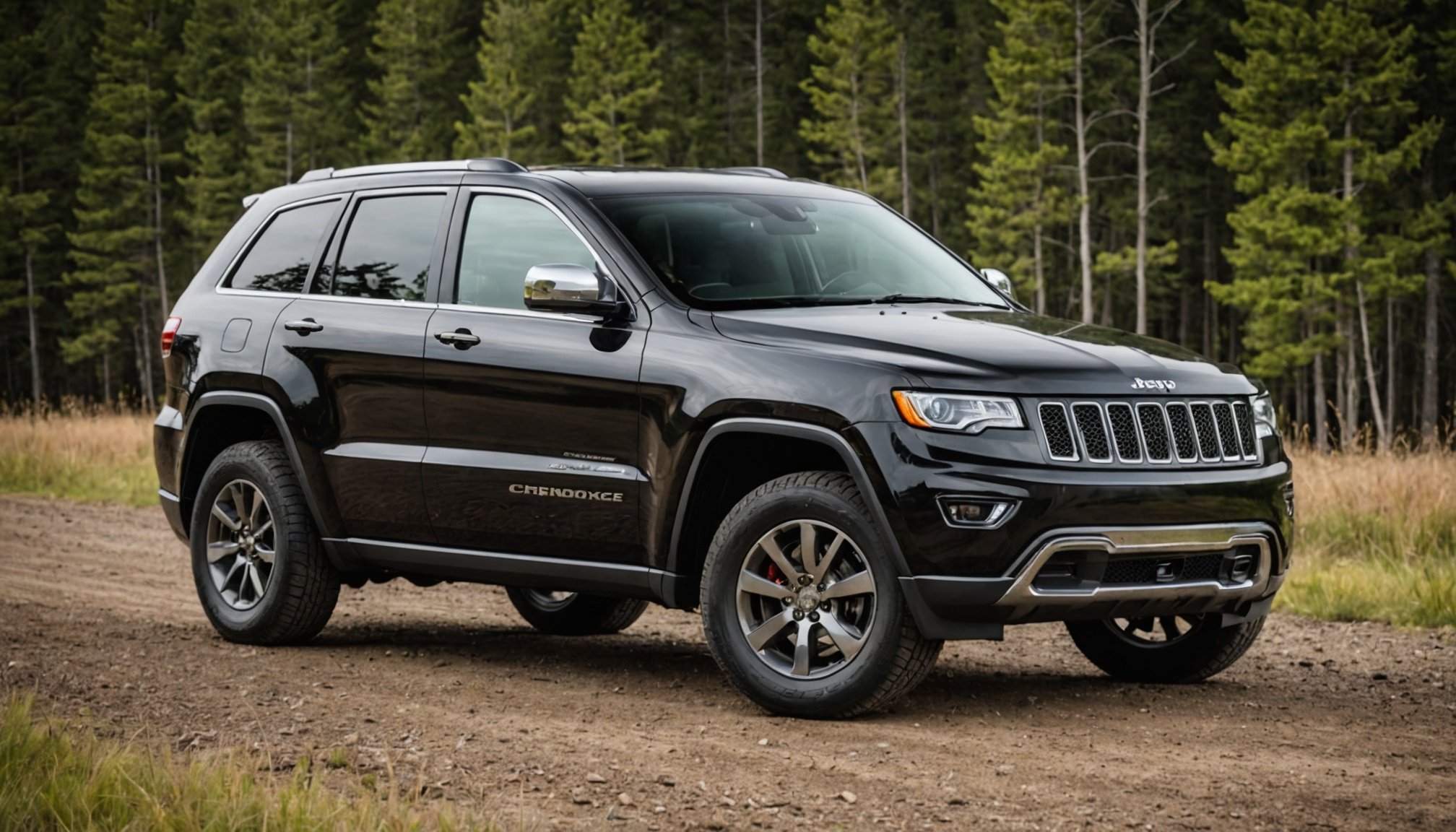Importance of Chassis Lubrication in Jeep Grand Cherokee
Chassis lubrication plays a crucial role in maintaining the performance and longevity of the Jeep Grand Cherokee. This specialised maintenance not only enhances vehicle smoothness but also significantly reduces wear and tear on moving parts. Regular chassis lubrication acts as a protective barrier, safeguarding important components from dust, dirt, and moisture that can readily increase friction and, subsequently, the deterioration of parts.
For Jeep Grand Cherokee owners, regular maintenance can translate into a seamless driving experience marked by efficient handling and stable rides. Proper and timely lubrication supports vehicle safety by preventing common issues like squeaks, harsh vibrations, and potential component failures under stress. These practices extend the vehicle’s lifespan and increase resale value due to well-preserved parts.
In parallel : Top Strategies to Upgrade Your Porsche Boxster Cooling Hoses and Prevent Overheating Issues
Despite its importance, there are misconceptions about chassis lubrication, especially among SUV owners. A frequent misunderstanding is the belief that modern vehicles don’t require lubrication due to advanced materials and sealed components. However, routine check-ups remain vital to maintain optimal suspension and steering functions. Recognising these needs can lead to better vehicle health and sustained performance, ensuring that your Jeep Grand Cherokee operates proficiently.
Recommended Products for Chassis Lubrication
Selecting the best lubricants for your Jeep Grand Cherokee is imperative for optimal chassis performance. Whether you’re using synthetic or conventional options, your choice can significantly affect longevity and efficiency. Many Jeep owners prefer synthetic lubricants due to their enhanced performance under various temperatures and longer-lasting properties. These can be particularly beneficial for those driving in extreme conditions or with heavy loads.
Also to discover : Elevate Your Acura RSX: Ultimate Guide to Installing an Adjustable Fuel Pressure Regulator for Peak Performance
Relying on top-rated products broadens the options available for effective lubrication. Typically, synthetic options offer superior thermal stability and oxidation resistance, making them reliable choices for those looking to minimize maintenance frequency. However, conventional lubricants are cost-effective and readily available, serving well for regular driving conditions.
Factors to consider when choosing a lubricant include vehicle age, frequency of off-road adventures, and environmental factors. An informed choice supports overall vehicle health while fitting individual needs. Comparing synthetic versus conventional lubricants often reveals a balance between performance in harsh conditions and economical maintenance. While synthetic options stand out in severe climates due to thermal resilience, conventional types remain a staple for routine drives.
Ultimately, selecting lubricants with strong reviews can contribute to your Jeep’s smooth operation.
Step-by-Step Chassis Lubrication Techniques
Preparing Your Jeep for Lubrication
Before starting any chassis lubrication on your Jeep Grand Cherokee, gathering the necessary tools and materials is crucial. You’ll require a grease gun, appropriate lubricants, rags, and safety gear such as gloves and goggles. Ensure your workspace is well-ventilated with adequate lighting, facilitating easy access to crucial components.
Identifying Chassis Lubrication Points
Identifying the correct lubrication points is essential for effective maintenance. These typically include joints in the suspension system and steering components. Utilizing diagrams and guides specific to the Jeep Grand Cherokee can simplify this process, highlighting key areas that need attention.
Applying Lubricant Correctly
When applying lubricant, ensure you’re using the recommended types suitable for various chassis components. It’s important to avoid over-lubrication, as excess grease can attract dirt and contaminants, hampering performance. Applying lubricant effectively ensures even distribution and accessibility, safeguarding your vehicle from undue wear and tear.
By following these step-by-step chassis lubrication techniques, you’ll maintain the vehicle’s efficiency and ensure a smoother ride. This proactive approach enhances safety and extends the longevity of vital components, empowering every Jeep owner to take charge of their vehicle’s maintenance.
Frequency of Chassis Lubrication Maintenance
Understanding the chassis lubrication frequency is essential for maintaining the Jeep Grand Cherokee’s performance and safety. For standard driving conditions, it is generally recommended to perform chassis lubrication every 12,000 miles. However, factors such as terrain and weather can necessitate adjustments. For example, off-road enthusiasts or those navigating harsh climates may require more frequent maintenance, possibly every 6,000 miles to prevent chassis lubrication problems.
If you’re noticing symptoms like increased road noise or stiff steering, these could be signs that more frequent maintenance is needed. Regular chassis checks can help identify and address these issues before they escalate, preventing more significant problems.
Creating a custom maintenance schedule tailored to your driving habits and environment ensures optimal vehicle health. This proactive approach not only extends the life of key components but also enhances overall driving experience. By understanding specific requirements and adhering to a consistent schedule, Jeep owners can effectively mitigate risks associated with inadequate lubrication. Embracing a habit of regular checks helps preserve the vehicle’s condition, promoting confidence in its reliability on all terrains.
Troubleshooting Common Chassis Lubrication Issues
Regular chassis lubrication for the Jeep Grand Cherokee can prevent many issues, but problems can still occur. Identifying and addressing these quickly is crucial for performance and safety.
Identifying Signs of Insufficient Lubrication
Symptoms of inadequate lubrication often include squeaking noises, rough handling, and increased friction between moving parts. These can significantly affect driving comfort and even lead to component failure. If neglected, such conditions can escalate, causing costly repairs. For example, difficult steering or unusual noises might prompt a professional inspection to evaluate potential damage and confirm lubrication requirements.
Addressing Excessive Lubrication Problems
Over-lubrication might seem harmless but can cause grease buildup, attracting debris and contaminants. This, in turn, can lead to blockages affecting performance. Resolving this issue involves cleaning the excess lubricant with suitable solvents and ensuring only prescribed amounts are used during maintenance. Preventing future over-lubrication needs checking lubrication points often and adjusting the application process.
Modifications and Upgrades for Enhanced Lubrication
Considering modifications can lead to better lubrication efficiency. Popular upgrades involve using aftermarket grease fittings, designed to enhance access and distribution of lubricants. Evaluating these parts’ compatibility ensures smoother operation. Case studies indicate these upgrades can significantly reduce the frequency and need for intensive maintenance.
Visual Aids and Diagrams for Chassis Lubrication
Understanding the Jeep Grand Cherokee’s key chassis lubrication points can be simplified with chassis lubrication diagrams. Visual maintenance guides not only make it easier to identify exact lubrication spots but also enhance the effectiveness of your maintenance efforts. When equipped with comprehensive diagrams, Jeep owners can execute precise and informed maintenance procedures.
Importance of Visual Aids
Visual aids are crucial for demystifying the sometimes complex layout of a vehicle’s chassis. By offering a clear representation, diagrams help users pinpoint specific lubrication sites, ensuring no component is overlooked. This visual clarity leads to improved maintenance efficiency and an assurance that lubrication is being carried out thoroughly and effectively.
Recommended Resources
Several reputable resources provide detailed diagrams and images suited to different vehicle models, including the Jeep Grand Cherokee. Service manuals, online forums, and Jeep-specific maintenance websites are valuable for accessing this information. Such resources can largely aid in familiarising oneself with each component’s location.
Creating Your Own Guide
Creating a personal maintenance guide customised to your vehicle’s structure can foster deeper understanding. By annotating diagrams with observations and insights specific to your usage, you’ll build a reference tool tailored for your consistent and reliable chassis maintenance practices.
Final Thoughts on Effective Chassis Lubrication Practices
Maintaining the chassis of your Jeep Grand Cherokee ensures smooth performance and longevity. It’s important to stick to a robust regimen, using recommended chassis maintenance tips. Adopting these best practices involves regular checks and lubrication at your vehicle’s lubrication points. Understanding the specific needs of your SUV and tailored choices can enhance its overall functionality.
Stay informed on maintenance by consulting service manuals, attending workshops, and engaging in Jeep owner communities. This keeps you updated with the latest developments and techniques. For example, knowing when to switch from synthetic to conventional lubricants based on your driving conditions might extend the lifespan of key components significantly.
DIY maintenance is an empowering practice for Jeep owners. By gaining hands-on experience with lubrication techniques, and identifying chassis lubrication points, you improve your vehicle’s efficiency while achieving cost savings. Your hands-on efforts improve reliability across varied terrains and climates.
Conscientious approach towards chassis maintenance tips fosters confidence in handling unexpected issues. This empowers owners to take charge of their vehicle’s health, ensuring that the Grand Cherokee runs efficiently and safely at all times. Encouragement for embracing DIY efforts paves the way for a smoother Jeep experience.





